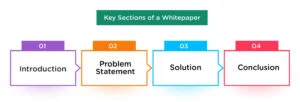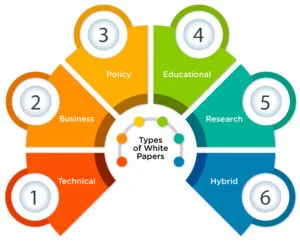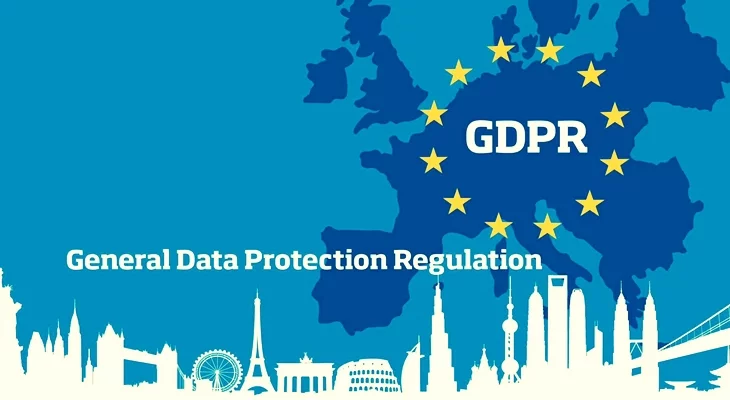White papers are a vital resource for companies that are looking to build credibility and provide answers to market problems. These extensive booklets discreetly highlight a company's goods or services. They also offer in-depth analysis of a subject. White papers may effectively help prospective consumers with their decision-making process by striking a balance between covert marketing and instructive material.
Regardless of your level of experience, this blog will help you understand the essential sections, types, and best practices of writing white papers.
What is White Paper?
In addition to providing a thorough examination of a topic, a whitepaper highlights a company's goods and services and urges readers to take advantage of them. Generally, a whitepaper will outline all the features that the product or service provides and explain why it is the most effective way to solve the issue at hand. It is the lengthiest official documentation format that businesses often utilize to establish authority and brand credibility.
A whitepaper's two primary objectives are as follows:
- Providing the reader with information on the subject—establishing the publisher as an authority.
- Enticing consumers to buy the offered item or service.
Whitepapers typically have a word count of 2,500 or more and are prepared in an academic manner. They are meant to be informative and helpful, not like a sales pitch. Before a sale, whitepaper is meant to be employed. Only facts should be presented; no views.
While product pitches can also be used to persuade people to purchase a particular good or service, they are not the same as whitepapers. However, the way a whitepaper is written is where it varies from a product pitch. While a product pitch is usually presented in a more forceful and false tone, a whitepaper is meant to be informative.
Main Purpose of a White Paper
The primary goal of a whitepaper is to educate the reader by delving deeply into the subject. You are, however, also utilizing it to promote your product or service in front of potential clients for business objectives.
Even while this is an overarching goal, it's crucial to avoid doing it in a blatant or intrusive manner, as you would with other types of marketing. Whitepapers should not be used for overt self-promotion. They are designed to convince potential clients to select your product or service based only on facts and proof that it addresses their issue.
Key Sections of a Whitepaper
Writing a whitepaper effectively requires adhering to a straightforward framework. A whitepaper's contents will vary depending on the company; however, all whitepapers should have these four essential components:
1. Introduction:
An introduction should be the first part of any whitepaper, regardless of the service or product being promoted. The reader should be immediately interested in the beginning and be persuaded to continue reading. You should discuss the issue that your product or service will resolve as well as your plan of action right away.
2. Problem Statement:
You must show that you truly comprehend the issue and the potential effects it may have on their lives after describing the problem that your product or service would resolve. In addition to outlining the possible consequences of failing to handle this issue, you should also discuss the advantages of resolving it.
3. Solution:
After identifying the issue, you have provided an explanation of why the reader should be interested in finding a solution. You must now describe how your service or product will address this issue. If the prior two sections are written well, your reader should be eager to hear this answer. When explaining the answer, go as detailed as you can to persuade the reader that it is the best option for them. Keep in mind that you do not want to turn it into a direct sales pitch.
4. Conclusion:
The problem and solution are summarized in the whitepaper's conclusion section. You will reiterate the issue and explain how your service or product can resolve it. The ending needs to be captivating and inspire the reader to proceed with the purchase of your good or service. In conclusion, you should also add a call to action so that the reader is aware of what to do next if they want to learn more about your company.
How to Write a White Paper
White papers are not like brochures or other marketing items. While brochures and other conventional marketing materials may be ostentatious and self-evident, a white paper aims to present convincing and factual data that addresses an issue or obstacle.
Following are the steps to write a white paper:
- Investigate and thoroughly define the subject.
- Construct a precise informational overview.
- Compose a captivating introduction.
- Make the document readable by formatting it.
- Proofread and revise
Types of White Papers
1. Technical
Mostly utilized by businesses that offer technical services, this kind of whitepaper contains exclusively technical knowledge and solutions.
2. Business
One of the most popular forms of whitepapers used in the business sector to provide information and solutions
3. Policy
Policy whitepapers are intended to give individuals all the information about a company's policies and are often utilized by the business or its users.
4. Educational
Associations with subject-matter knowledge employ these whitepapers, which are created with the intention of teaching people about a certain subject.
5. Research
Whitepapers of this sort are typically produced by research groups or businesses to broaden their own and users' understanding of topics.
6. Hybrid
A hybrid whitepaper is one that has two distinct information categories that are related by a common topic.
Utilize White Papers – Level Up Your Business!
Businesses can establish authority, educate their audience, and discreetly market their solutions by using white papers. Such resources are an efficient way to engage potential customers and help them make decisions because they follow a defined framework and prioritize facts over advertising. Building trust with your audience and offering valuable insights are the same objectives whether you're writing a technical, business, or instructional white paper.
Now is the perfect moment to become an expert at creating polished and captivating white papers to advance your content strategy. Make your impact as a thought leader in the field by getting started now!
Keep visiting us at KnowledgeNile to uplift your marketing efforts and to consume well-informed content.
Read More:
The Future of Connectivity: Exploring Multi-Access Edge Computing in 5G







